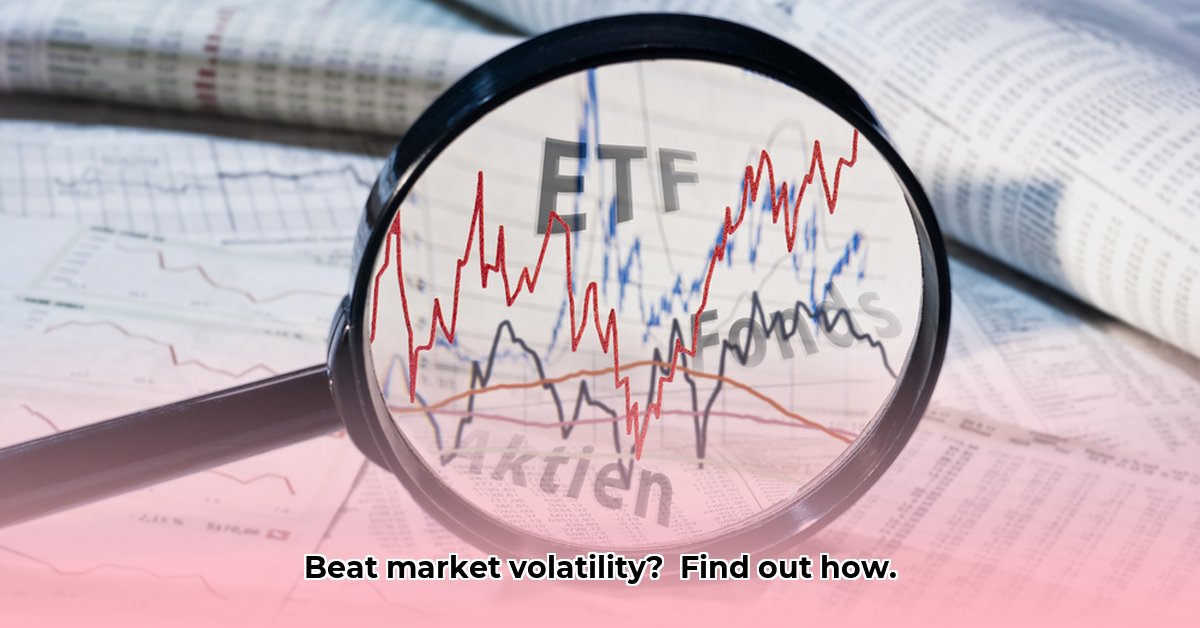
PGIM Buffer ETFs: A Defined-Outcome Approach to Investing
Investing often feels like navigating a rollercoaster. PGIM Buffer Exchange-Traded Funds (ETFs) offer a different ride: a smoother, more predictable journey aimed at limiting losses while still participating in market gains, albeit with a ceiling on potential profits. This article will explain how these ETFs work, compare them to other investment options, and provide actionable steps to determine if they're right for you.
How PGIM Buffer ETFs Work: Mitigating Risk Through Options Strategies
PGIM Buffer ETFs employ options strategies (contracts granting the right to buy or sell an asset at a specific price) to create a "buffer" against market downturns. This buffer aims to protect a portion of your initial investment, preventing significant losses. However, this downside protection comes with a trade-off: a "cap" on potential upside gains. This trade-off is similar to purchasing insurance – accepting a lower potential profit to gain peace of mind and reduced risk of substantial losses. The fund managers aim to create a defined range of potential returns within a specified period, typically one year. It's important to remember that this is a goal, not a guarantee; market fluctuations can impact actual outcomes.
Key Takeaway 1: PGIM Buffer ETFs aim to balance risk and reward by limiting potential losses while capping potential gains, offering a more predictable investment experience compared to traditional investments.
Investing in PGIM Buffer ETFs: A Practical Guide
Before investing, follow these steps:
Assess Your Risk Tolerance: Are you comfortable with potentially lower returns to protect your principal? A risk assessment matrix can help determine your suitability for this type of investment. Conservative investors who prioritize capital preservation might find these ETFs attractive; those seeking aggressive growth might not.
Analyze the Trade-Off: Weigh the potential benefits of downside protection against the reduced potential for significant profits. Consider your investment goals and your comfort level with risk.
Select the Appropriate ETF: PGIM offers various Buffer ETFs, each targeting specific market sectors or investment strategies. Research each fund's investment objectives and target return range, selecting ETFs that align with your financial goals and risk profile.
Consider the Timing: The timing of your investment and divestment within the target outcome period significantly influences returns. Investing earlier exposes you to greater market fluctuations, while investing closer to the end limits your potential upside. Consider your risk tolerance when determining the optimal entry and exit points.
Diversify Your Portfolio: Never put all your eggs in one basket. Integrate PGIM Buffer ETFs as part of a broader investment strategy, including stocks, bonds, and other asset classes.
Seek Professional Guidance: Consult a financial advisor to determine if PGIM Buffer ETFs fit within your overall financial plan, considering your unique circumstances and risk tolerance. A qualified advisor can help navigate the complexities of these strategies and mitigate potential downside risks.
Key Takeaway 2: A well-defined investment strategy, including risk tolerance assessment, appropriate ETF selection, and diversification, is crucial for successful utilization of PGIM Buffer ETFs.
Weighing the Pros and Cons: A Balanced Perspective
| Feature | Pros | Cons |
|---|---|---|
| Loss Mitigation | Limits losses during market downturns. | Caps potential profits, limiting upside participation. |
| Return Predictability | Offers a defined range of potential returns. | Actual returns may differ from the predicted range due to unforeseen market events. |
| Market Volatility Impact | Reduces the impact of market volatility. | Not suitable for investors seeking high-growth potential. |
| Portfolio Strategy | Provides a valuable tool for portfolio diversification, especially for risk-averse investors. | Requires a thorough understanding of investment strategies and associated risks. |
Understanding the Risks: Potential Challenges
While PGIM Buffer ETFs offer a degree of protection, several risks exist: potential inaccuracies in option pricing models, liquidity risks (difficulty selling when desired), counterparty risk (risks associated with other entities involved in the fund's operations), and regulatory changes affecting the product. Additionally, these funds are relatively new. Hence, long-term data is limited, hindering accurate long-term performance prediction. Tax implications also need to be considered.
Key Takeaway 3: While offering downside protection, PGIM Buffer ETFs are not without risk. Thorough research, careful consideration of your personal financial situation, and professional guidance are highly recommended.
Mitigating Capped Upside Risk: Strategies for Success
The capped upside potential is a key characteristic of PGIM Buffer ETFs. However, several strategies can help mitigate this:
Strategic Timing: Carefully consider your investment timeframe, balancing the desired level of downside protection against the potential for higher returns.
Diversification: Combine PGIM Buffer ETFs with other asset classes to offset the limited upside potential and reduce overall portfolio risk.
Regular Monitoring: Keep track of your portfolio's performance and market conditions, adjusting your investment approach accordingly.
Professional Guidance: Consult a financial advisor to create a diversified portfolio and manage risk effectively.
Disclaimer: This article is for informational purposes only and does not constitute financial advice. Consult a qualified financial advisor before making any investment decisions.